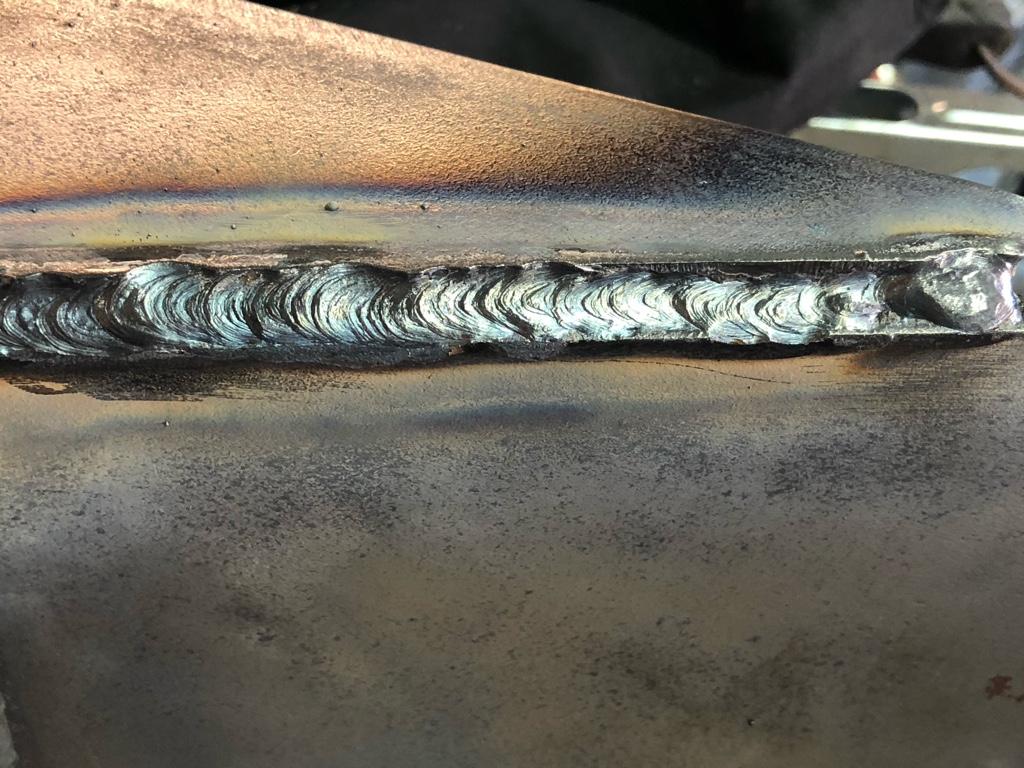How to Prevent Weld Undercut: Crucial Tips for Welders
How to Prevent Weld Undercut: Crucial Tips for Welders
Blog Article
Understanding the Art of Welding: Just How to Prevent Undercut Welding Issues for Flawless Construction Results
By understanding the root triggers of undercut welding and applying reliable techniques to avoid it, welders can boost their craft to brand-new levels of excellence. In the pursuit of perfect fabrication outcomes, mastering the art of welding to prevent undercut problems is not simply an ability but a requirement for those making every effort for excellence in their work.
Recognizing Undercut Welding

To stop undercut welding, welders must make certain proper welding criteria, such as adjusting the existing, voltage, travel speed, and preserving the correct electrode angle. Furthermore, using the proper welding strategy for the certain joint arrangement is vital. Using weaving movements or backstepping techniques can aid guarantee correct weld metal deposition and reduce the likelihood of undercut development. Regular assessment of welds throughout and after the welding procedure is likewise vital to catch any type of undercut early and make necessary modifications to prevent more problems. Preventing weld undercut. By understanding the reasons for undercut welding and implementing preventive steps, welders can achieve top quality, structurally audio welds.
Reasons For Undercut in Welding
Understanding the elements that add to damage in welding is important for welders to generate top quality, structurally sound welds. When the weld metal does not effectively fill up the groove created between the base metal and the formerly deposited weld metal, damaging takes place. A number of variables can bring about damage in welding. One common reason is excessive warmth input. Welding at heats for extended durations can lead to the base metal melting more than preferred, bring about undercut. Inadequate welding current or incorrect welding speed can also add to undercut. Insufficient current may not supply sufficient heat to thaw the base and filler metals appropriately, while extreme rate can protect against appropriate combination, triggering undercut. Additionally, inappropriate electrode angles or inaccurate torch adjustment strategies can produce areas of reduced weld metal deposition, promoting undercut. Comprehending these causes and applying appropriate welding strategies can help stop damaging problems, guaranteeing strong and durable welds.
Strategies to stop Undercutting

To mitigate the risk of undercutting in welding, welders can employ calculated welding techniques intended at improving the high quality and honesty of the weld joints. In addition, using the right welding technique for the details joint setup, such as weave or stringer beads, can contribute to decreasing undercutting.
Using back-step welding techniques and controlling the weld bead profile can also aid disperse warmth equally and reduce the threat of undercut. Regular examination of the weld joint throughout and after welding, as well as carrying out quality guarantee actions, can aid in finding and addressing damaging problems immediately.
Relevance of Proper Welding Criteria
Picking and this page maintaining suitable welding parameters is necessary for accomplishing successful welds with minimal flaws. Welding specifications describe variables such as voltage, existing, travel speed, electrode angle, and shielding gas circulation price that straight impact the welding process. These criteria should be meticulously adjusted based upon the type of product being welded, its thickness, and the welding technique employed.
Appropriate welding parameters guarantee the right quantity of heat is put on thaw the base metals and filler material consistently. If the specifications are set expensive, it can cause excessive warm input, triggering distortion, spatter, or burn-through. On the other hand, if the parameters are too reduced, insufficient combination, lack of penetration, or undercutting may happen.
Quality Assurance in Welding Operations

Conclusion
Finally, grasping the art of welding calls for a complete understanding of undercut welding, its reasons, and techniques to avoid it. By making sure appropriate welding criteria and executing quality control techniques, flawless recommended you read fabrication results can be attained. It is essential for welders to constantly strive for excellence in their welding procedures to avoid undercut problems and produce high-quality welds.
Undercut welding, a click to read more typical issue in welding processes, happens when the weld steel does not effectively load the groove and leaves a groove or depression along the bonded joint.To avoid undercut welding, welders must make sure appropriate welding criteria, such as adjusting the current, voltage, travel speed, and maintaining the proper electrode angle. Poor welding current or incorrect welding speed can also contribute to undercut.To alleviate the risk of damaging in welding, welders can utilize calculated welding strategies intended at improving the top quality and stability of the weld joints.In conclusion, understanding the art of welding requires a thorough understanding of undercut welding, its causes, and techniques to stop it.
Report this page